Ice Monsters!
Over the years I haven’t figured out what’s best, the actual fishing itself or what it takes to get ready.
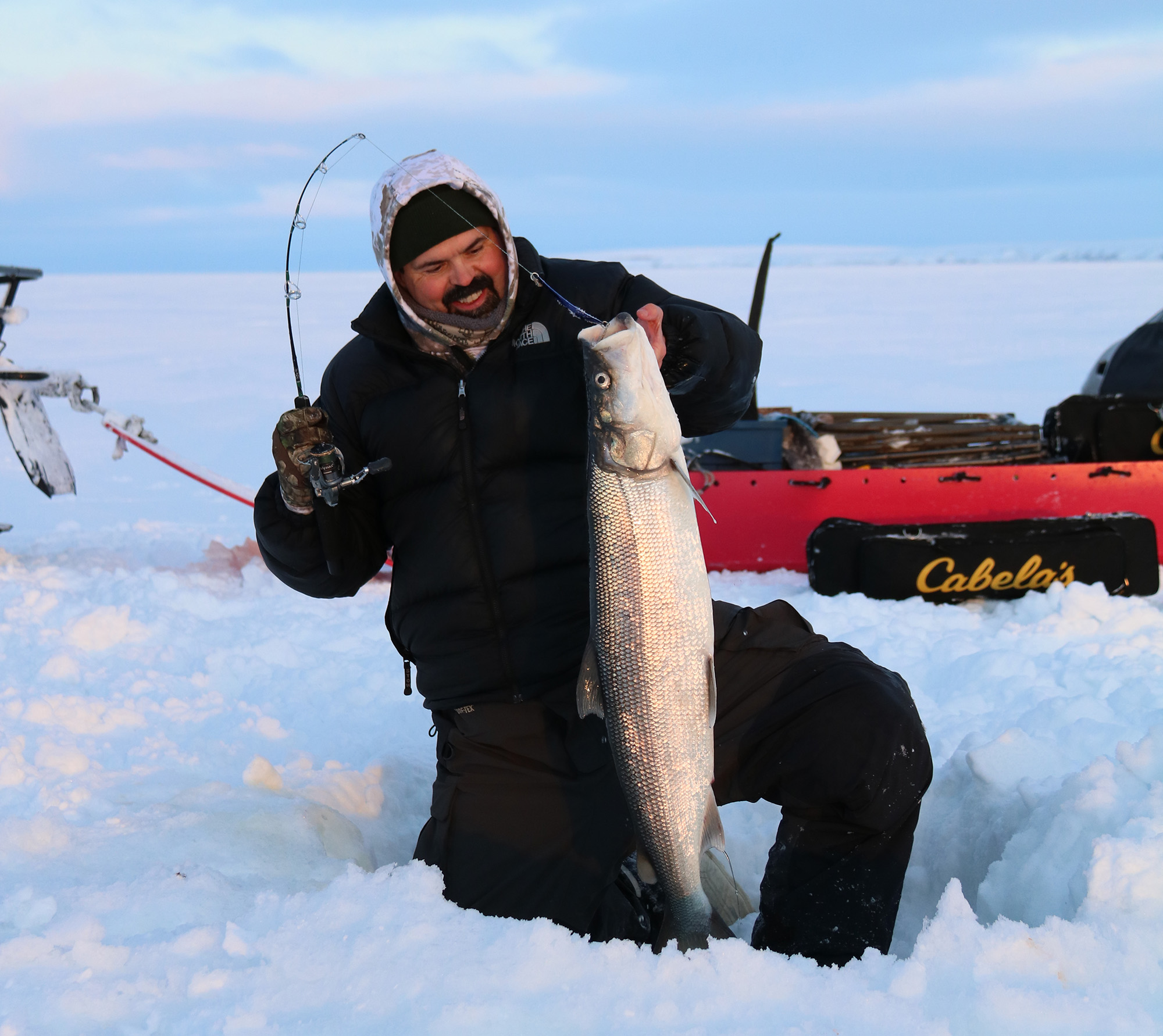
Excitement and fun can sometimes be tough to come by in the early season, but if you have access to fishing like this or wherever you’re located then grab an auger, a fishing line and go give it a try. Just be safe, check the ice and have fun.
After pulling on my bunny boots, I stepped through the kunnichuck, (arctic entry) and out onto the deck overlooking Kotzebue Sound. The frozen ice that led down the road from my house into the Chukchi Sea looked slick, but still pretty solid. The sun, what there was of it was out too, creating patches of fog that bounced their way along the horizon in the cold frosty air. That old familiar “wet” smell that’s so common to the arctic this time of year could be detected in the breeze. Oh, but what a glorious day it was going to be I thought, especially for ice fishing!
Over the years I haven’t figured out what’s best, the actual fishing itself or what it takes to get ready. You need a snow machine of course, and a sled packed with all the necessities an ice fishing adventure such as this, would require. Niksiks (Eskimo word for fishing jigs) made of willow branches and Caribou horn are a must, plus rods, reels, tip-ups, extra line, lures, pliers, extra gloves, a fillet knife, trash bag for the meat, a thermos full of coffee and food, which in my case is Pop-Tarts and depending an ice hut, all assembled in tub for the short ride across the ice.
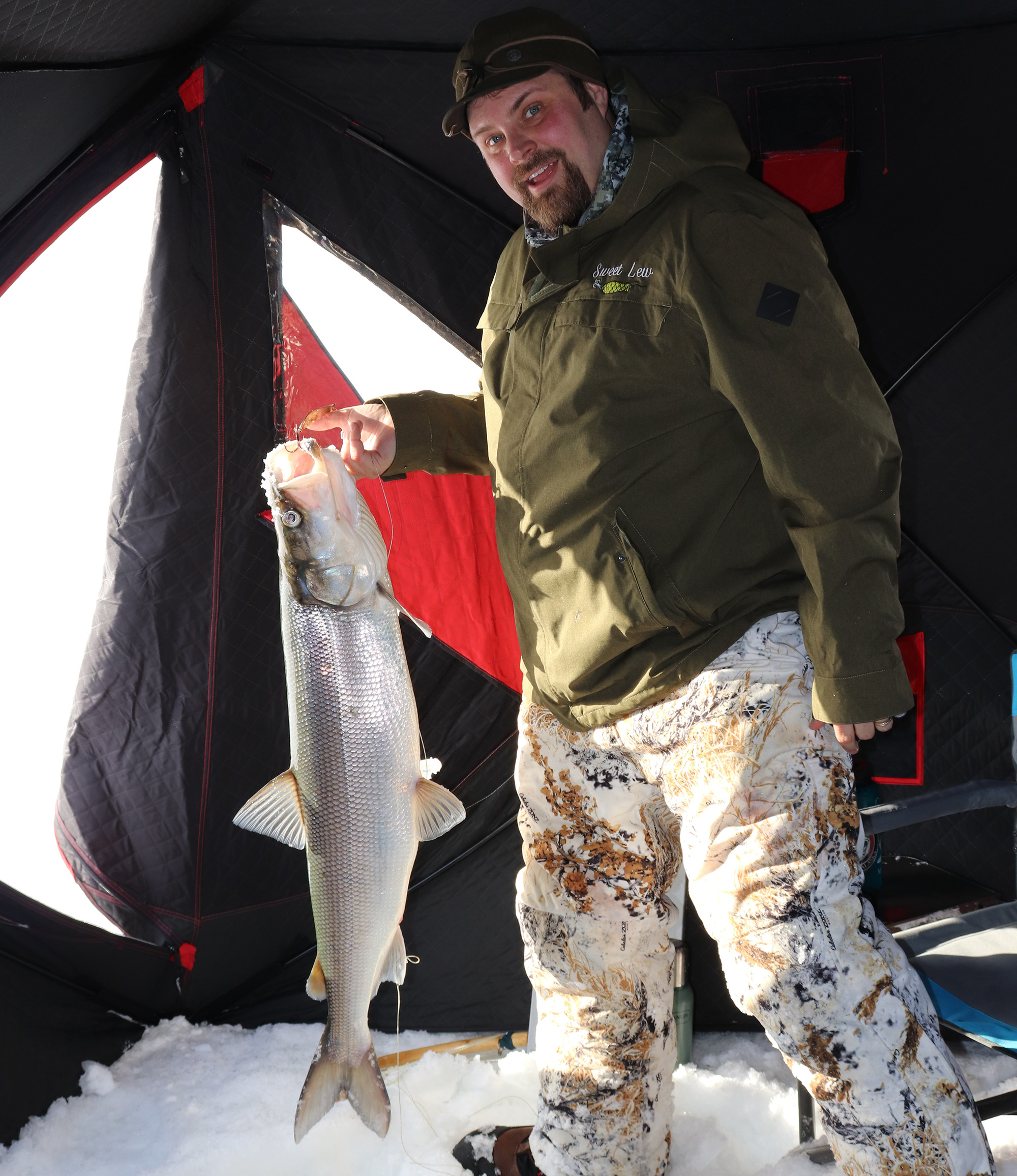
Something special about catching the first fish of the year. Lew did just that and what a fish it was! Using a Niksik or fishing jig, and then feeling the pull of one these big guys below the ice is like no other and something you won’t soon forget!
If you’re wondering the quarry, well that’s easy, and there’s one, it’s the almighty “Sheefish” or Inconnu as their known in scientific circles. These incredible fish can only be found in the arctic and subarctic areas of Alaska and are sometimes referred to as the “Tarpon of the North”. They’re a beautiful fish, silver in color, with a dark bluish sheen along the top of their back. They’re big fighters too, that like to thrash and crash once the hook is set, and especially so once you get them up and out of the water.
Here in the Northwest Arctic they are most commonly found in the Selawik and Kobuk river drainages of Kotzebue Sound. These fish can get big weighing up to 60 pounds and are commonly found in the deep cold water where the current is the swiftest. Their tremendous size and meat quality make them one of the most unique and best tasting fish in North America.
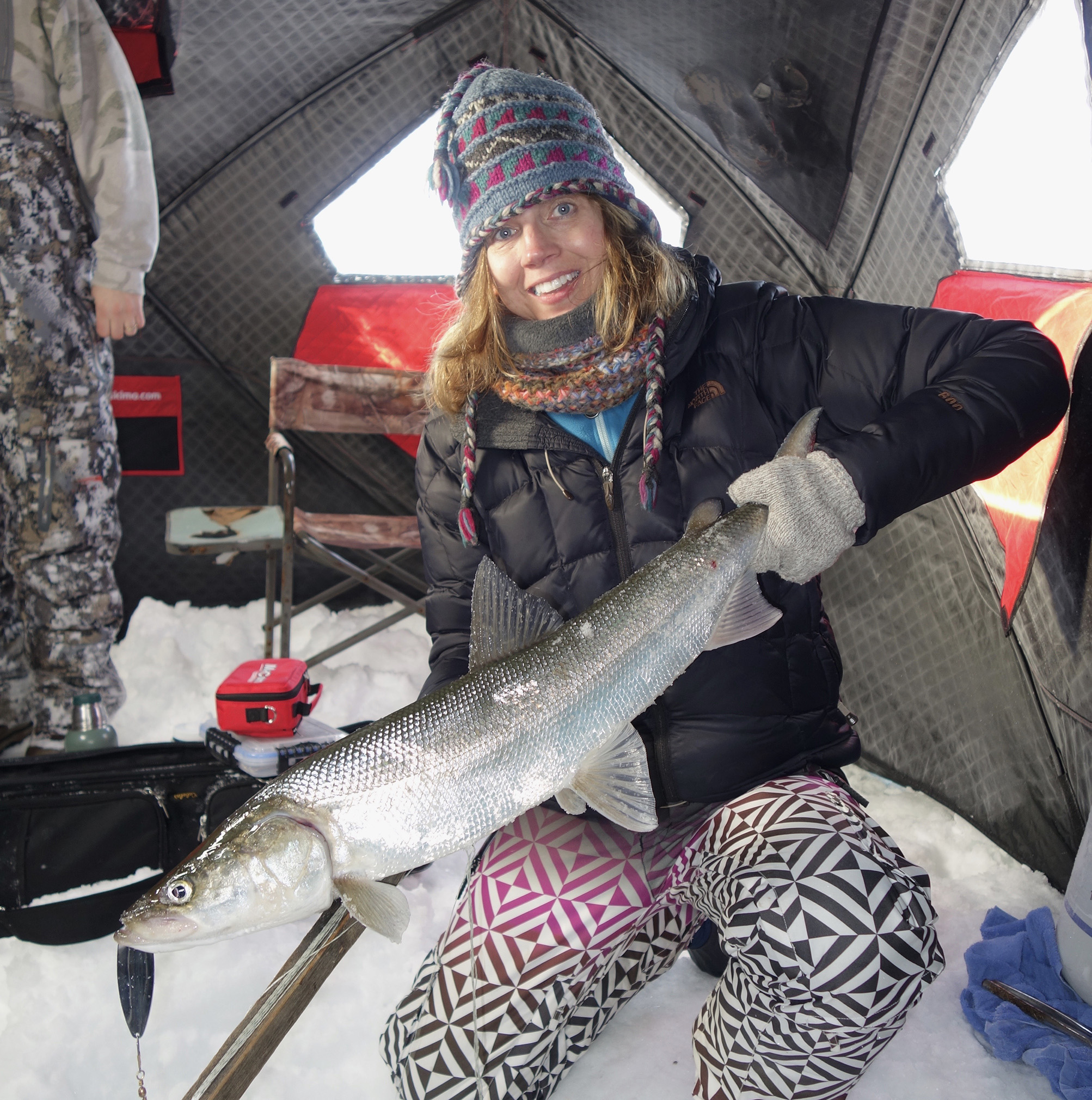
The first time you catch or “hook” a Sheefish, is something you will never forget. The sheer power and immensity of pulling one of these things through a 10” hole is by far some of the most extreme ice fishing in the world.
These incredible fish can only be found in the arctic and subarctic areas of Alaska and are sometimes referred to as the “Tarpon of the North”.
When it comes to ice fishing for these monsters it’s a pretty simple process. You first must find where the current is leaving one of the river channels and cut your holes. Unless you are lucky enough to find a hole that has already been cut/fished this will be toughest part. The ice gets pretty thick during the winter months in and around the Kotzebue Sound, reaching 6-8 feet in some places, but usually between 4-5 feet in the main channel. Most people who venture onto the ice will usually start in one place, cut a few holes, fish it and then move to another if it isn’t producing. It has been my experience that Sheefish will move after a few days and it’s usually closer to town.
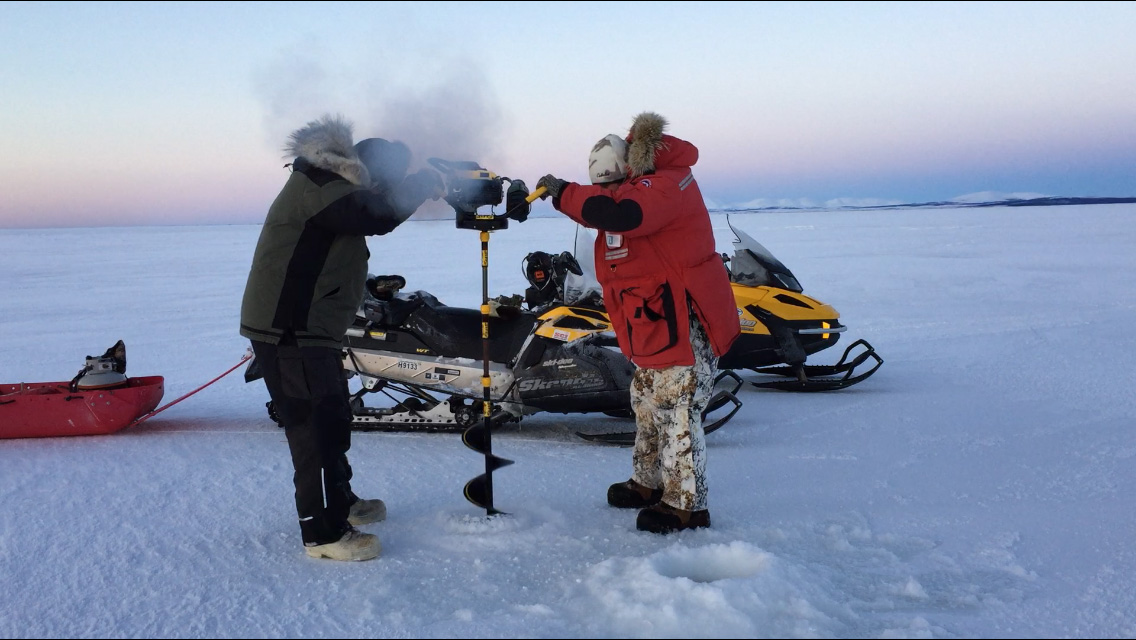
Like all Ice fishing, it requires getting through the ice, sometimes many feet thick, especially here in the Arctic. It does take time and work, plus you have to watch and make sure you don’t get a boot full of water.
For me personally, the gas-powered ice auger is one of the greatest inventions since the toaster. For many years I used a handheld, (hand operated auger) and if it wasn’t for the promise of catching a big fish that would provide a great meal, I would of chose to do something else with my time. It was hard work and getting through 5-6 feet of ice was a back -breaking affair. If you plan to ice fish anywhere, my advice is to buy one of the new and improved gas operated augers. They make drilling through ice a piece of cake and can have you fishing in a matter of minutes.
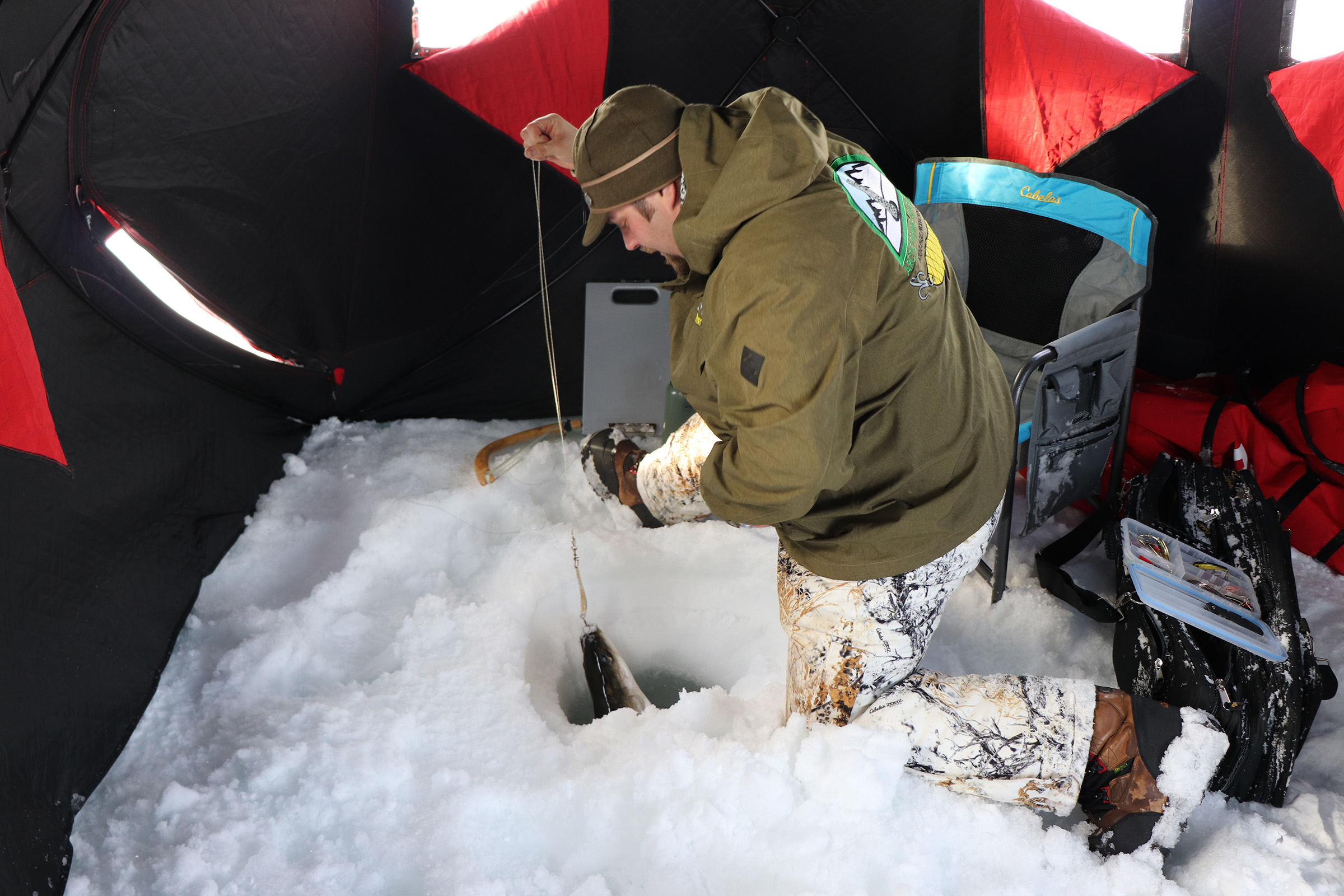
Being careful not to lose him, Lew inches this guy up through the ice. Once you see the “Tarpon” like head make its appearance through the slush it will give you a feeling of sheer joy and what the day hopefully holds.
The first time out on the ice looking for Sheefish is always special. It holds the promise of surprise and suspense, never knowing what you’ll catch and what’s to come. For a first timer there is nothing quite like it, but if you’re an old hand, the feeling of past experiences can overwhelm you. The thought of pulling one of these big fish through the ice is a life changing event like no other. That may sound a little over the top to some, but it’s true. Hooking into a big fish, guiding him up through the hole and then grabbing a gill for that final pull is one of my favorite things to do here in the Arctic, always has been.
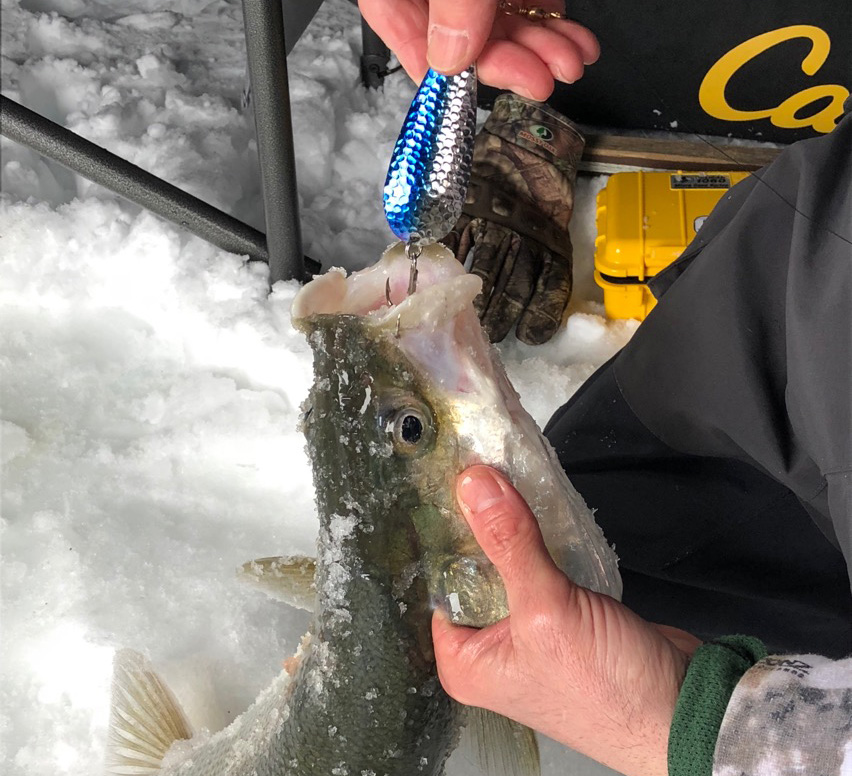
Choosing the right lure, like my “old blue” here, can make all the difference in catching or not. When you’re out on the ice make sure you have a variety to choose from and if one isn’t working, choose another until you find something that works!
When you do hook a fish the chore of getting it up through the hole becomes your main concern. If you’re a first timer eagerness and excitement will set in and you’ll try to get them up as fast as possible, which usually results in a slipped hook and/or a lost fish. Patience combined with a little muscle and finesse, will have them up and out of the salty slush with ease. Believe me the first time you pull a 40-inch fish out of the ice is almost surreal!
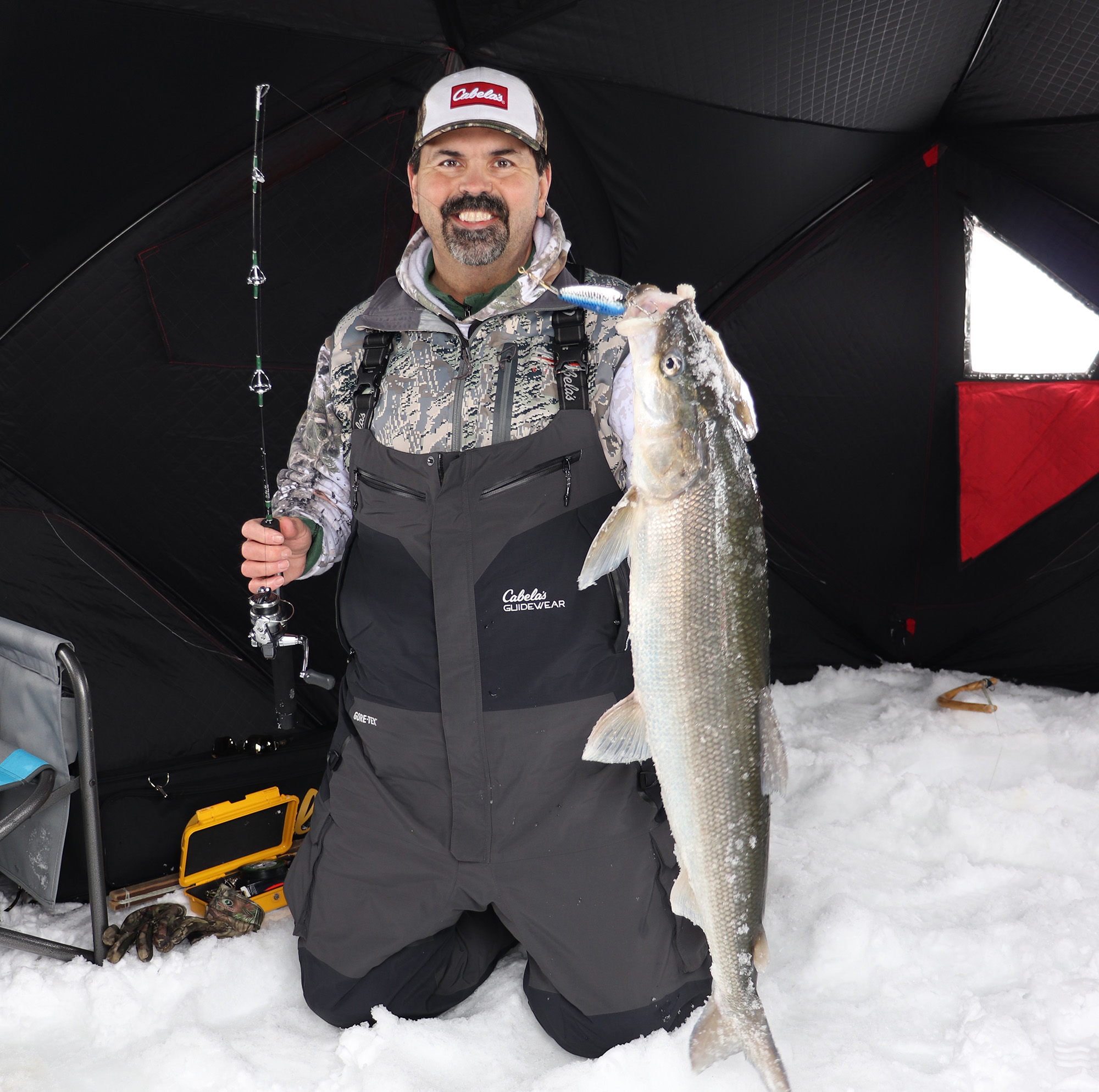
Nothing better in the Ice Fishing world in my opinion!
Like most Arctic days this one didn’t disappoint. We caught fish, shared in our catch and had a great time with family and friends., plus the fish fry we had later was amazing! That’s one thing about the arctic, it never disappoints and always provides. So, if you want to try something unique, something totally different, where arctic adventure and big fish come together, then grab your Niksik, some hooks and a few pop-tarts and head north to the pack ice in search of Sheefish, it will be one of the grandest times you will ever experience!
Paul Atkins is an outdoor writer from Kotzebue, AK. He’s written hundreds of articles on big game hunting and fishing in North America, and Africa, plus surviving in the Arctic.
Share this entry
- fishing
- fresh-water
Interesting links
Here are some interesting links for you! Enjoy your stay :)Pages
- About
- Accesories
- Accesories & Equipment
- Accesories & Equipment
- Advertisement Contact
- Ammo
- Big Game
- Blog
- Bow Hunting
- Cart
- Community
- Deer
- Download Hafaspot
- Equipment
- FAQ
- Fire Arms
- Fishing
- Fresh Water
- Grill
- Home
- Home | FIND YOUR SPOT
- home 2
- Hunting
- Login and registration
- Lures
- My Account
- News
- News
- News
- Página de ejemplo
- Payment
- Prime Cuts Recipes
- Salt Water
- Shooting
- Small Game
- Store
- Targets
- Wild Caught Recipes
- Wild Game Recipes

